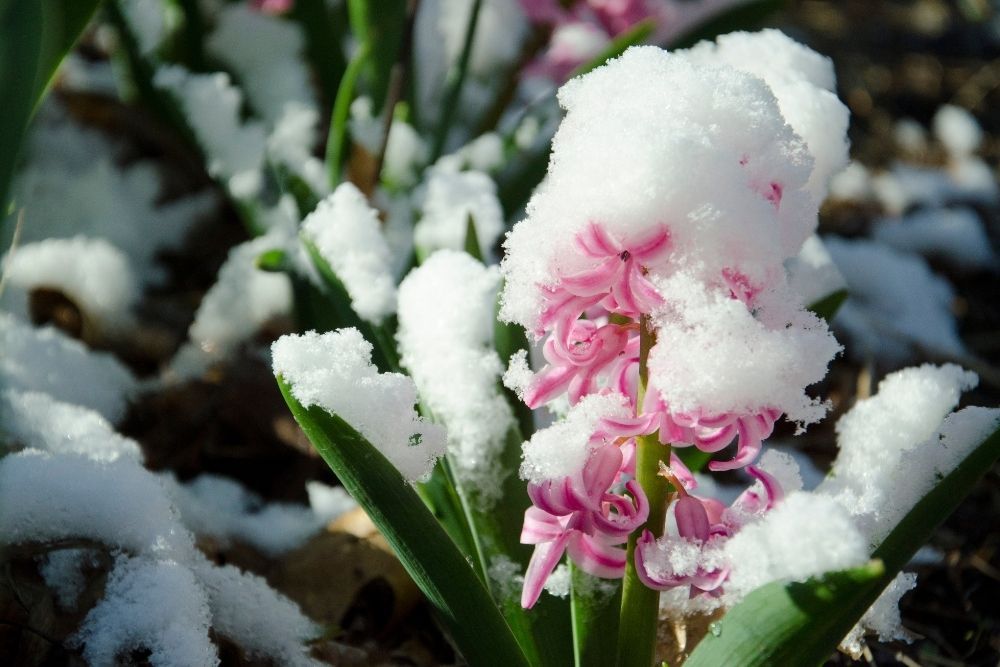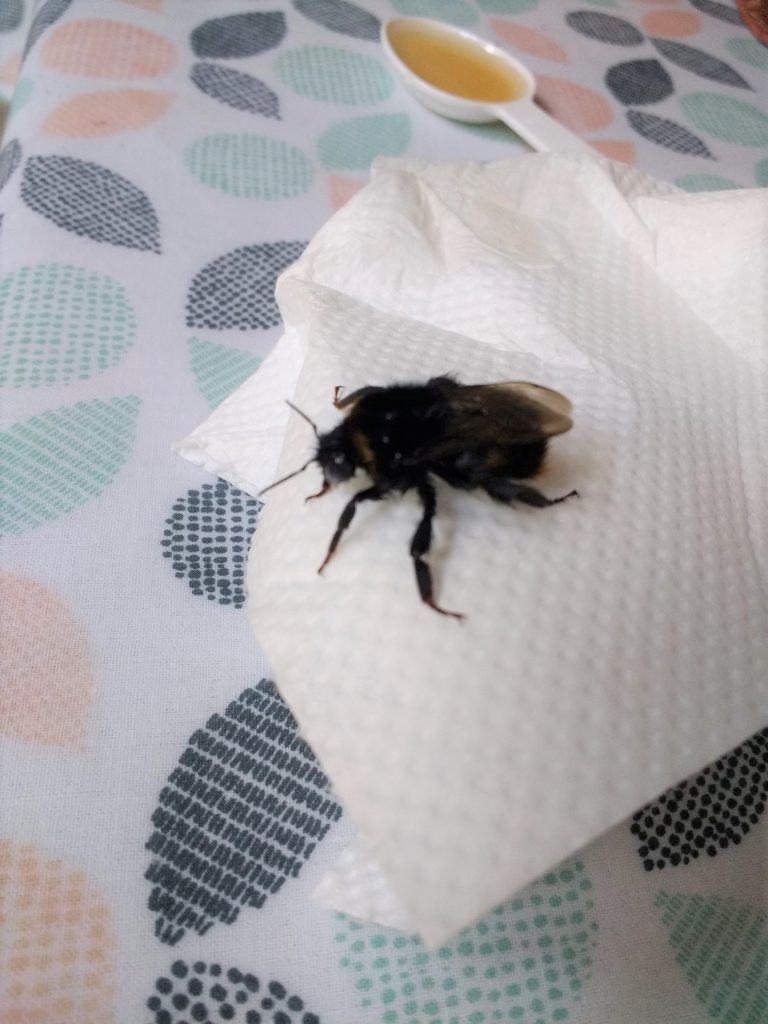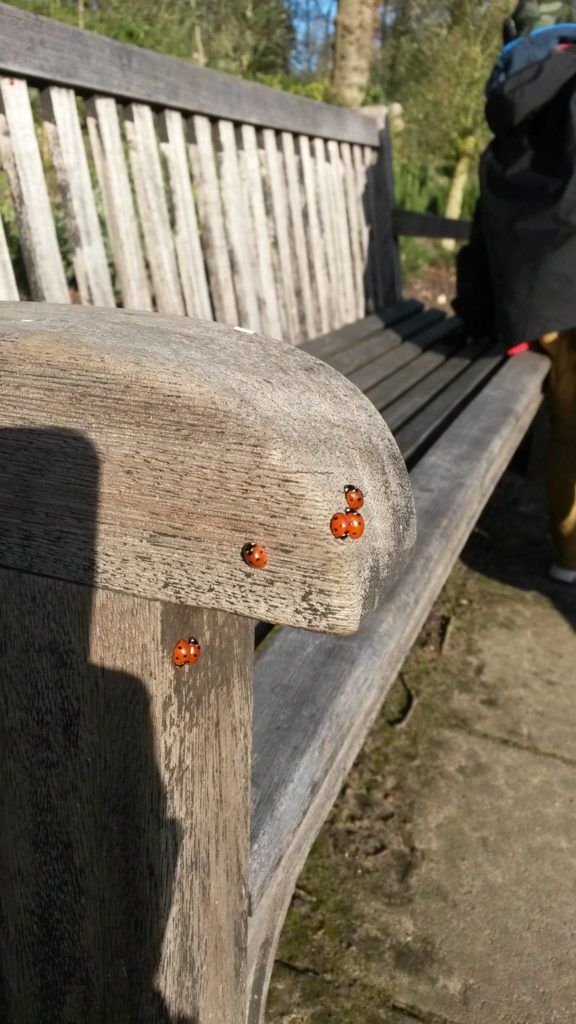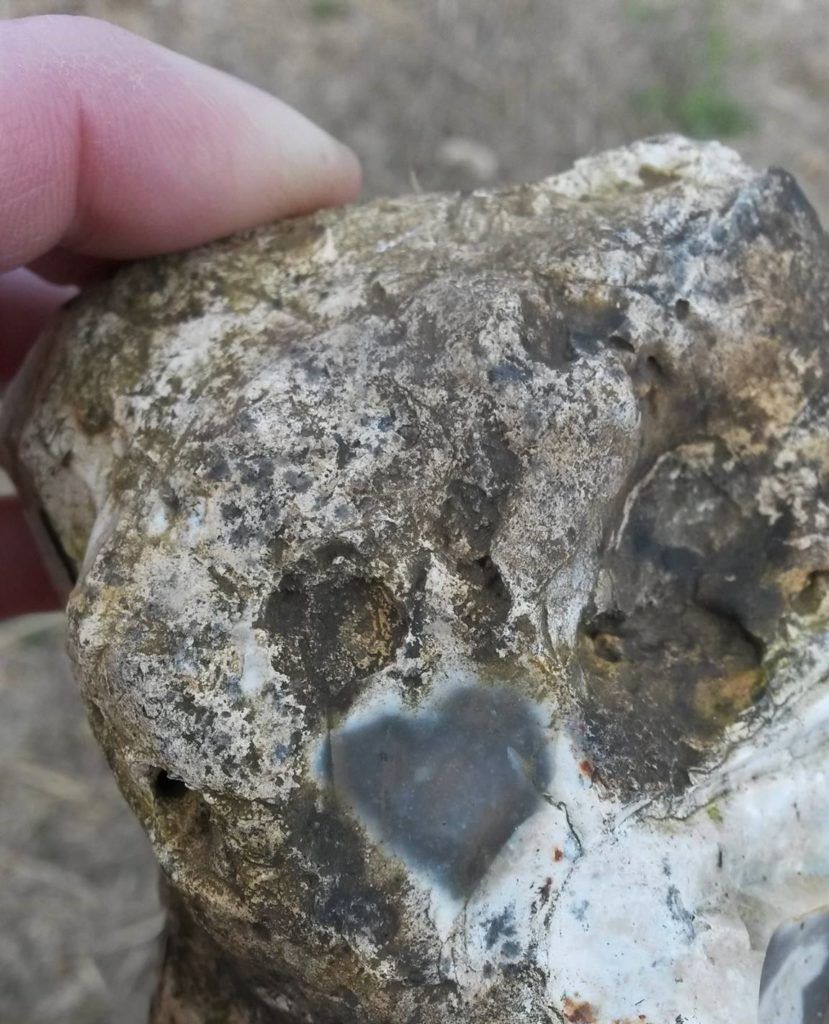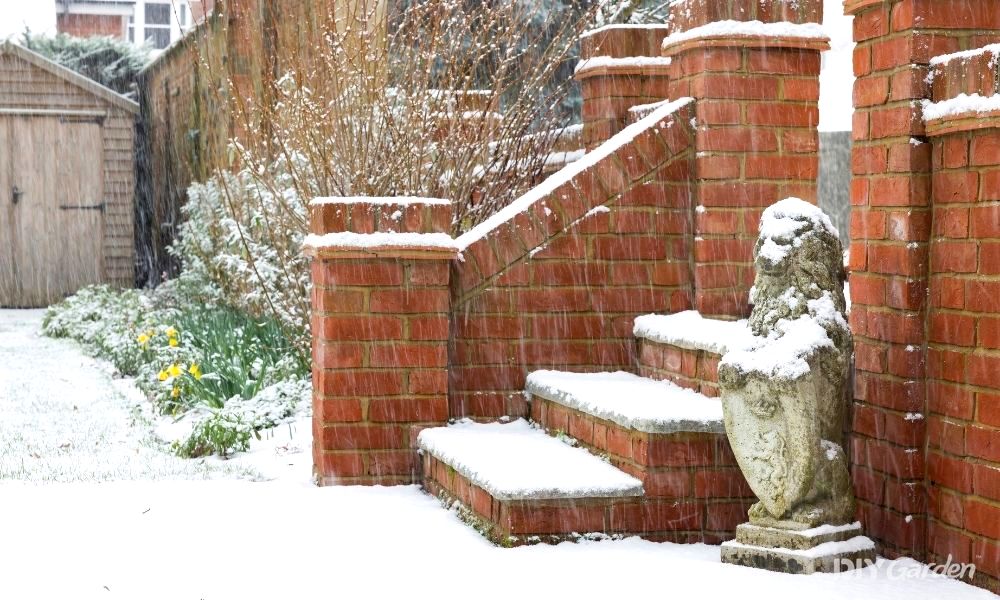
Freezing February is upon us, and it seems like there’s little to do other than stare longingly from the window at empty borders and the veggie patch. But spring is on its way – February is usually the last cold month (fingers crossed).
What To Do With Veggies In February
If we get a dry day beef up your growing areas with plenty of organic matter. Digging nutrients into the soil now gives it time to rot down into its basic form and feed your vegetables efficiently in spring and summer.
Putting too much fertiliser on your soil near growing time can cause leaf burn and an abundance of too much greenery fired up by the nitrogen. Dig chicken pellets, horse manure or Growmore into soil now, and you’re ready to go in March and April when it warms up.
Broad beans are tough enough to withstand ice, frost, and snow. You can put some in now if you fancy it, and they’ll be ready in late spring. A reliable type is Aquadulce but I’m going off-piste this year and growing a dwarf variety. I’ll show you what happens later in the year.
Keep cutting dead leaves from brassicas and stake any that are tall so strong winds don’t batter them down.
What To Do With Flowers In February
Bedding plants
There are some tough bedding plants that can go out now and they’ll look their best in a month or two. Wallflowers fall into this category.
Wallflowers are biennial so if you want to grow from seed you won’t get flowers till next year, but you can buy ready-to-go wallflowers from nurseries or online.
Wallflowers attract early waking bees and butterflies and the scent is a knockout. They fill a border with colour in early bare months.
Primroses and hyacinths are other excellent choices. Hyacinth scent is very strong so if you love scent pop some already flowering plants in now. You need to plant hyacinth bulbs in the autumn for spring flowering as they need a good 12 weeks to establish roots.
Summer Bulbs
Summer flowering bulbs such as agapanthus (African lily) can go in pots now. Pots are free draining so the bulbs won’t sit in wet, freezing soil and rot. Wait a while before putting any summer bulbs directly in the soil though, that’s a job for late March or April.
Plug Plants
Many nurseries sell plug plants about now. These are tiny plants that have germinated and have some of their adult leaves.
They can’t go outside yet, but if you have a warm greenhouse or a bright windowsill why not buy a few and see how they come on.
Fuchsias and pelargoniums are good plug plant choices. They can go outside when it’s warmed up in the border or into hanging baskets for a fraction of the adult plant costs.
What To Plant In February
Bare Root
It’s the last month to order up bare-root plants. There’s not as much choice now as growers turn their attention to potted plants, but you can still snap up a bargain.
Chit seed potatoes
It’s a little early, but you can start chitting potatoes on the window sill. The best way to do this is to head out to a garden centre and choose the best from the bin of seed spuds.
Look for healthy specimens about the size of an egg. Gently squeeze them. There should be some give, but not full-on squidge. Buy early, second earlies, and main crop if you want a constant supply in 2022.
Put them in an egg box on a windowsill with indirect light and they will start to grow roots. These are called the chits. You can plant potatoes without chits but they help give them a head start. It’ll take a month or so.
I put my potatoes in sacks to save room in the raised beds because they take a long time to grow.
Tomatoes
It’s way too cold outside for tomato seeds to germinate, but you can start off some seeds on a sunny windowsill at the end of the month.
I love Mirabel which is getting hard to find, so I save seeds each year. A few seeds in a flowerpot on a sunny windowsill now will be ready to go outside in late spring and early summer.
Early flower seeds
Have you put any sweet pea seeds in yet? If not, pop some in a container with a long root run or straight into the soil. They germinate early and aren’t afraid of the cold. Cosmos and salvias can be grown from seed on a sunny window sill too.
Perennials
Perennials can go in the ground if it’s not frosty. Hardy choices are cranesbill (hardy geraniums) and Japanese anemones. They won’t mind a touch of February’s cold.
How to Tend to Your Lawn And Hedges In February
There’s not much to do with the lawns and hedges.
Try to avoid walking on your lawn if it’s wet, frosty, or snowed on as it damages the grass beneath and creates muddy areas that require re-seeding. If it’s bright and sunny you could give evergreen hedges a trim.
How to Help Out Wildlife In February
February can be freezing or we might have a warm one. If it’s warm, early-rising bumblebees and hedgehogs will be looking for food.
Put out heavy bowls of water plus cat biscuits for the hogs, and pick up what’s not eaten in the morning.
Bees need early flowering plants such as forsythia, mahonia, wallflowers, crocus, and primroses. If you don’t have any in your garden make up a pot and place it in a sunny area for the bees to find.
If you find a bee on a cold pavement, you can save it with warmth and sugar water. I often find them during the school run and pick them up on a leaf or tissue (or covid mask!) and pop them in a sunny spot.
If I’m heading home, I’ll bring them with me and offer sugar water on a teaspoon. More often than not they are just shivering and exhausted. Don’t be afraid to help. Sometimes even the warmth of your hand is enough to get them up and flying and again. Here’s one I picked up on the school run recently.
There’s still time to put up a nest box for small birds, they’ll appreciate the chance to nest in a shady spot with safe foliage nearby. Even if they don’t nest in it, they may sleep there overnight so it’s worth putting some up.
Don’t forget to leave fat and protein-rich foods out to keep them going. It’s been a long winter for birds, so peanuts, fat balls, or grated cheese are all gratefully received.
If you’ve only got room for one feeder, fill it with sunflower seeds.
I have robins, blue tits, great tits, coat tits, nuthatches, wrens, and chaffinches taking sunflower seeds from my squirrel buster today – and I don’t live in the rural countryside either.
Offering consistent water, tree/hedge cover, and sunflower seeds will encourage bird visits in urban and rural areas. Give it a go – you never know what birds are watching.
Now here’s something interesting. I’ve been thinking for months that my cat had furballs, but I’ve figured out these are owl pellets. Owls vomit up the fur, feathers, and bones from any prey they catch. Inside these hard pellets I’m sure to find all sorts of gruesome bits.
How to Deal With Garden Pests In February
If we have a warm February the slugs and snails will begin to emerge.
If you can deal with them now, it’ll stop hundreds in spring. Use eggshells, wool, and copper tape to keep them out of the pots and raised beds. Check beneath foliage, stones, and bricks for molluscs and remove them before they start laying eggs.
Rake over the soil to expose slug and snail eggs which die in UV light. I remember turning over large stones in my garden last year to expose hundreds of snail eggs. A blackbird pair arrived to eat the lot!
Pop bands on fruit trees or a thick layer of Vaseline to stop crawling pests laying their eggs in the crown. Once the sun is out aphids will arrive. Here are some super aphid predators warming themselves up on a park bench.
Look out for pigeons on your greens. Net vegetables, but check for wildlife each day.
Tending to Patios, Decks, and Garden Furniture In February
Spring is in sight! If you haven’t done so, sweep leaves from the patio, decking, gazebos, and any other outside seating areas. This will let any weak sunlight through to dry them out.
Dead leaves trap water and encourage rot, but clear spaces dry out and make cleaning them up a much easier job.
February is a good time to think about any new purchases to make your summer gardening easier. A pressure washer will help keep furniture and decks clean, or maybe a new lawnmower is needed?
What about a new cold frame or a water butt? New garden seats or a patio heater? These items are generally cheaper now than in a few months’ time so grab a bargain while you can.
Hold On For the Sun!
February heralds the end of a hard winter’s slog – it won’t be long and the sun will arrive to wake up your garden so hold on, we’re almost there.
And of course, Happy Valentine’s Day from the DIY Garden team.
